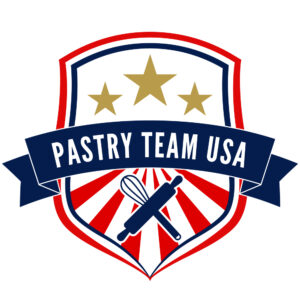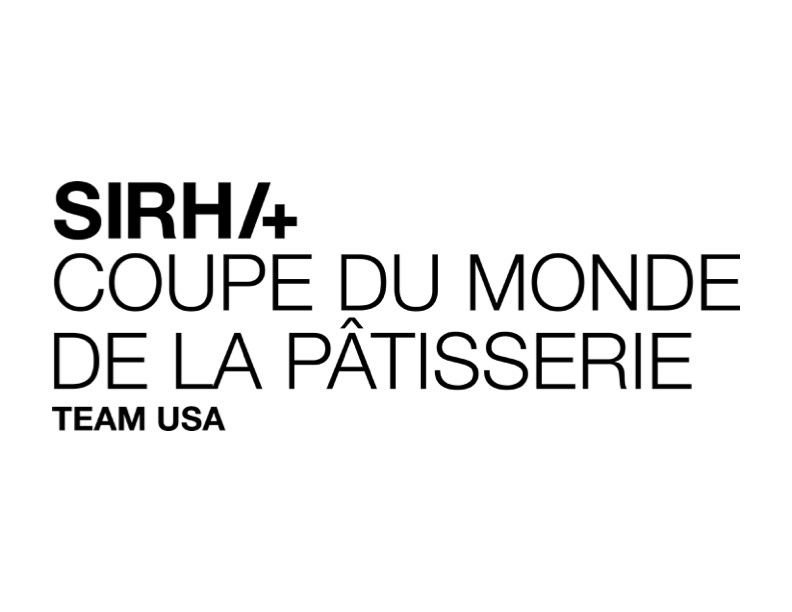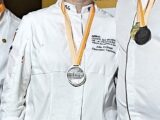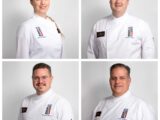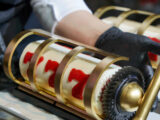Sugar and pastillage work represent intricate and delicate forms of culinary artistry, transforming basic ingredients into stunning edible creations. These techniques have been refined over centuries, captivating both professional pastry chefs and hobbyists alike with their versatility and beauty.

Sugar work involves manipulating sugar in various forms to create decorative elements, sculptures, and intricate designs for desserts and confections. From spun sugar to pulled sugar and everything in between, the possibilities are limited only by the artist’s imagination. Sugar work requires precise temperature control, timing, and dexterity to achieve the desired results.
Pastillage, on the other hand, is a sugar-based “dough-like” substance used in cake decorating and sculpting. It provides a sturdy yet edible medium for creating elaborate decorations, intricate figurines, and architectural elements for cakes and other confections. Pastillage can be rolled, molded, and sculpted into intricate shapes, making it a favorite among pastry chefs for its versatility and durability.
Both sugar and pastillage work demand patience, practice, and a keen eye for detail. Mastery of these techniques opens up a world of creative possibilities in the realm of pastry and dessert artistry, allowing chefs to craft stunning masterpieces that delight the senses and captivate the imagination.
As a pastry chef, the realm of sugar and pastillage work opens up a world of endless creativity and artistic expression. These techniques are not just about crafting desserts; they are a form of culinary artistry that allows us to push the boundaries of imagination and transform simple ingredients into breathtaking edible masterpieces.
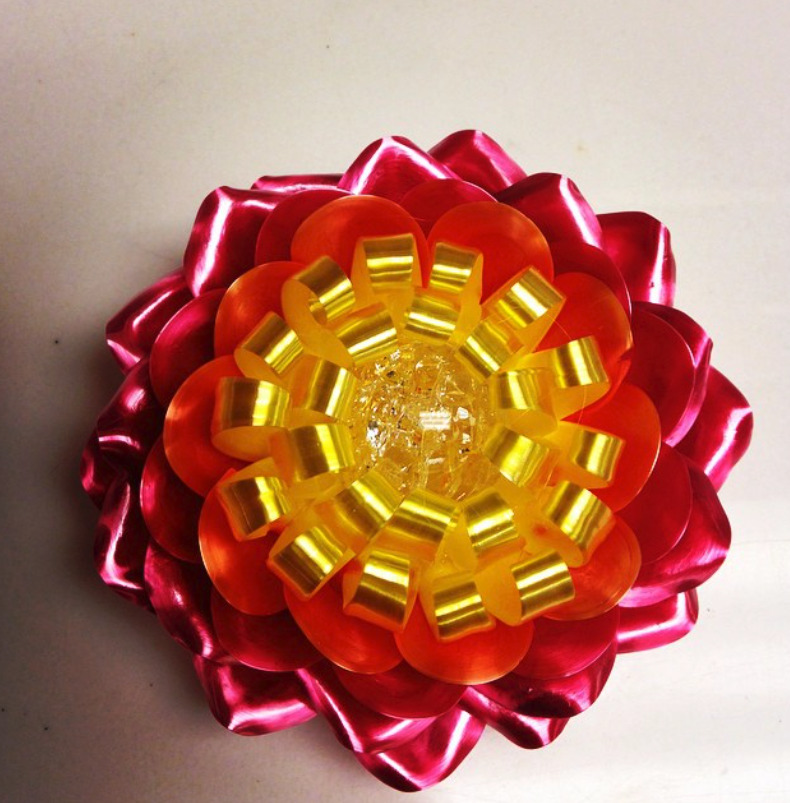
Sugar work, with its delicate balance of temperature, texture, and timing, challenges us to harness the transformative power of sugar. From the ethereal beauty of spun sugar to the intricate details of pulled sugar sculptures, each creation is a testament to the precision and skill required to manipulate this versatile medium.
Pastillage, too, holds a special place in the heart of every pastry chef. Its pliability and strength make it the perfect canvas for sculpting intricate figurines, elaborate decorations, and architectural marvels that adorn our cakes and confections. With pastillage, we can bring our wildest confectionery dreams to life, crafting edible works of art that dazzle the eye and delight the palate.

But beyond the technical mastery lies the true magic of sugar and pastillage work—the ability to evoke emotion, tell stories, and create moments of wonder and delight for those who experience our creations. Whether it’s a wedding cake adorned with delicate sugar flowers or a whimsical pastillage sculpture for a special celebration, each piece is infused with passion, craftsmanship, and a touch of the extraordinary.
In the world of pastry, sugar, and pastillage work is not just techniques; they are a language through which we communicate our love for the craft and our dedication to delighting others with the beauty and ingenuity of our creations.
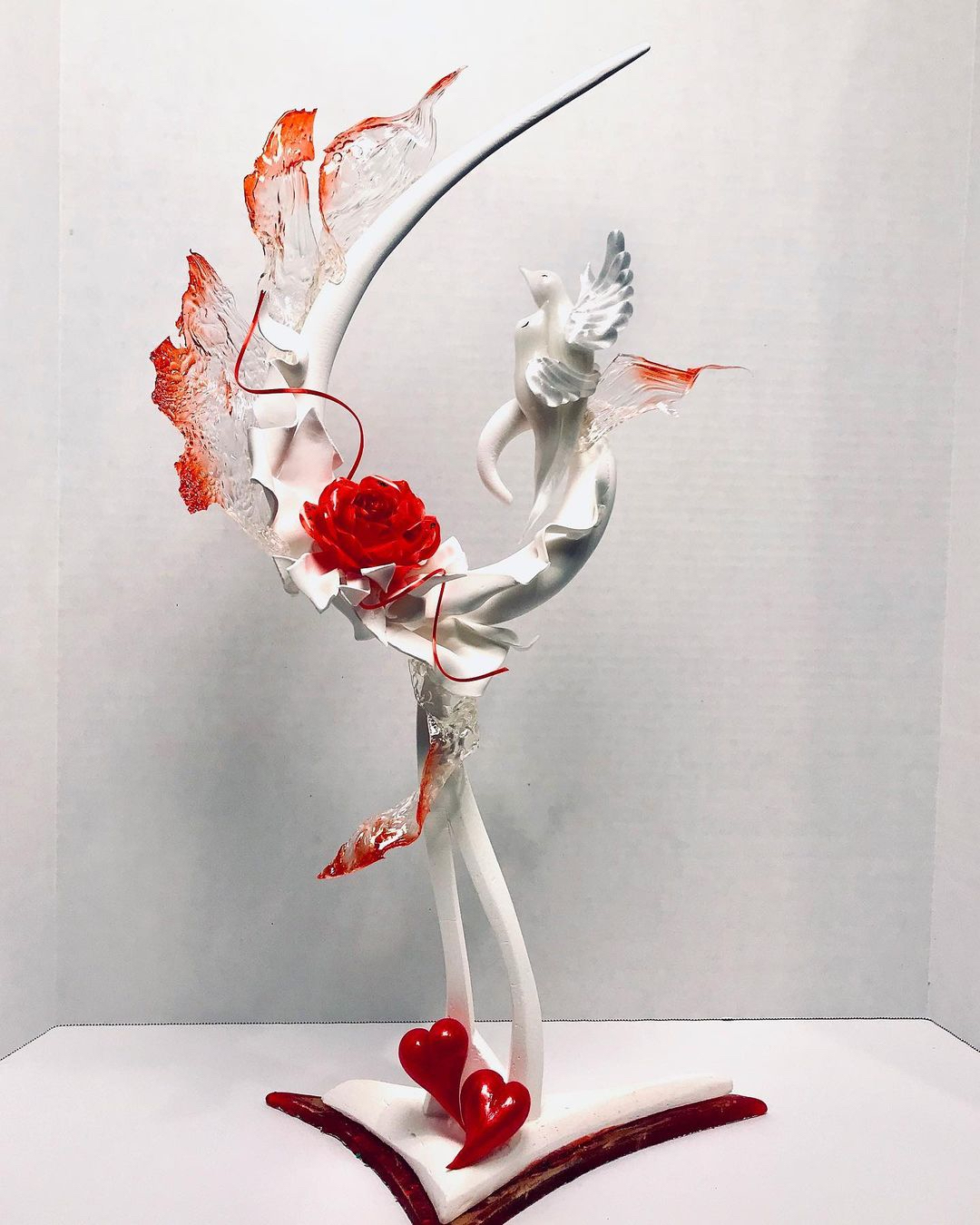
Throughout this series, we will delve into the fundamentals of sugar and pastillage work, from understanding the basic ingredients and tools to mastering essential techniques for creating exquisite edible works of art. Whether you’re a seasoned pastry professional or a curious enthusiast, join us on a journey into the sweet and sculptural world of sugar and pastillage.
We can think of no one better to help guide us through the world of sugar and pastillage (and chocolate) work than Chef Ewald Notter.
About Chef Ewald Notter
Chef Ewald Notter stands as a luminary figure in the world of pastry arts, renowned for his unparalleled skill, innovative techniques, and profound influence on the global culinary landscape. Born and raised in Switzerland, Notter’s journey into the realm of pastry began at a young age, nurtured by a deep-rooted passion for craftsmanship and creativity.
According to his bio, Ewald is considered a master of modern-day confectionery arts. He is a celebrated competitor, eminent teacher, and esteemed author. With an eye for color, an appreciation for textures, and a keen sense for details, Ewald introduced many ‘firsts’ that have helped mold the craft and advance the industry.
After completing his formal training in pastry and confectionery in Switzerland, Notter embarked on a remarkable culinary odyssey that would take him across continents and cultures, shaping his expertise and vision along the way. His quest for knowledge led him to study under some of the world’s most esteemed pastry chefs, honing his skills in traditional techniques while embracing innovation and experimentation.

Michel Willaume/Instagram – Ewald Notter
He has worked and competed in over 15 countries, winning numerous awards including at least 15 gold medals, as well as National and World Pastry Team Champion, and Pastry Chef of the Year. As part of the 2001 U.S. National Team in Lyon, France, he scored the highest ever recorded number of points for sugar, 699 out of 700, helping the U.S. Team achieve its first and, so far, only Gold Medal at the Coupe du Monde de la Pâtisserie. Ewald has been honored by the American Academy of Hospitality Sciences with the 5 Star Diamond award as “One of the Finest Confectionery Chefs of the World.” He was also the first pastry professional inducted into the Pastry Art and Design Hall of Fame.
Throughout his illustrious career, Chef Notter has continued to inspire and educate generations of pastry chefs through his acclaimed books, instructional videos, and hands-on workshops. As a dedicated educator, he has served as a mentor and role model for countless aspiring pastry professionals, sharing his wealth of knowledge, expertise, and passion for the craft.
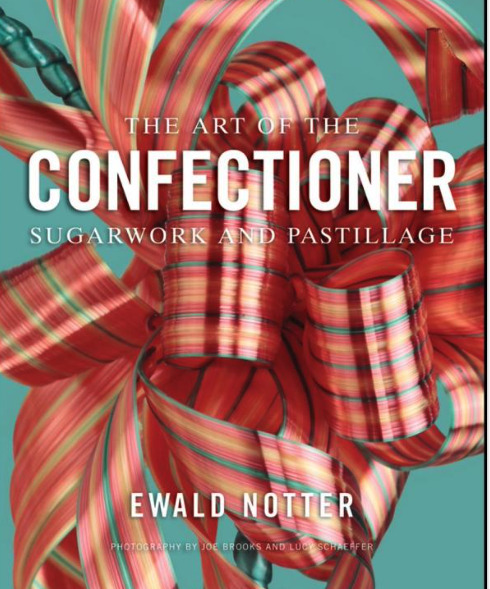
Ewald has been featured in four instructional videos showcasing chocolate and sugar decoration for the Culinary Institute of America, all of which have become their top-selling videos. Additionally, he has authored several highly regarded books that have become classic references in the field. These include “The Textbook for Sugar Pulling & Sugar Blowing,” “Das ist Zucker—That’s Sugar,” and the widely popular “The Art Of The Chocolatier,” released in 2010. Notably, in April 2012, Ewald released “The Art Of The Confectioner,” the subject of reference in this article.
Notter’s contributions to the art of pastry extend far beyond his impressive list of accolades and accomplishments. As the founder of the Notter School of Pastry Arts in Orlando, Florida, he has created a hub of creativity and learning where students from around the globe can immerse themselves in the intricacies of pastry and confectionery under his expert guidance.
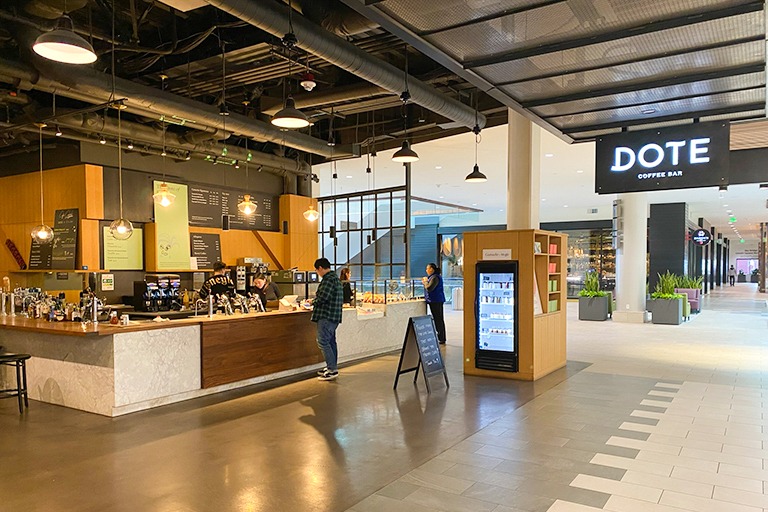
Today, Ewald is the co-owner of DOTE, serving the finest grade, locally roasted, and sourced coffee, chocolates, and pastries. With four locations in Bellevue and Redmond, Washington, DOTE is a coffee and chocolate lovers paradise.
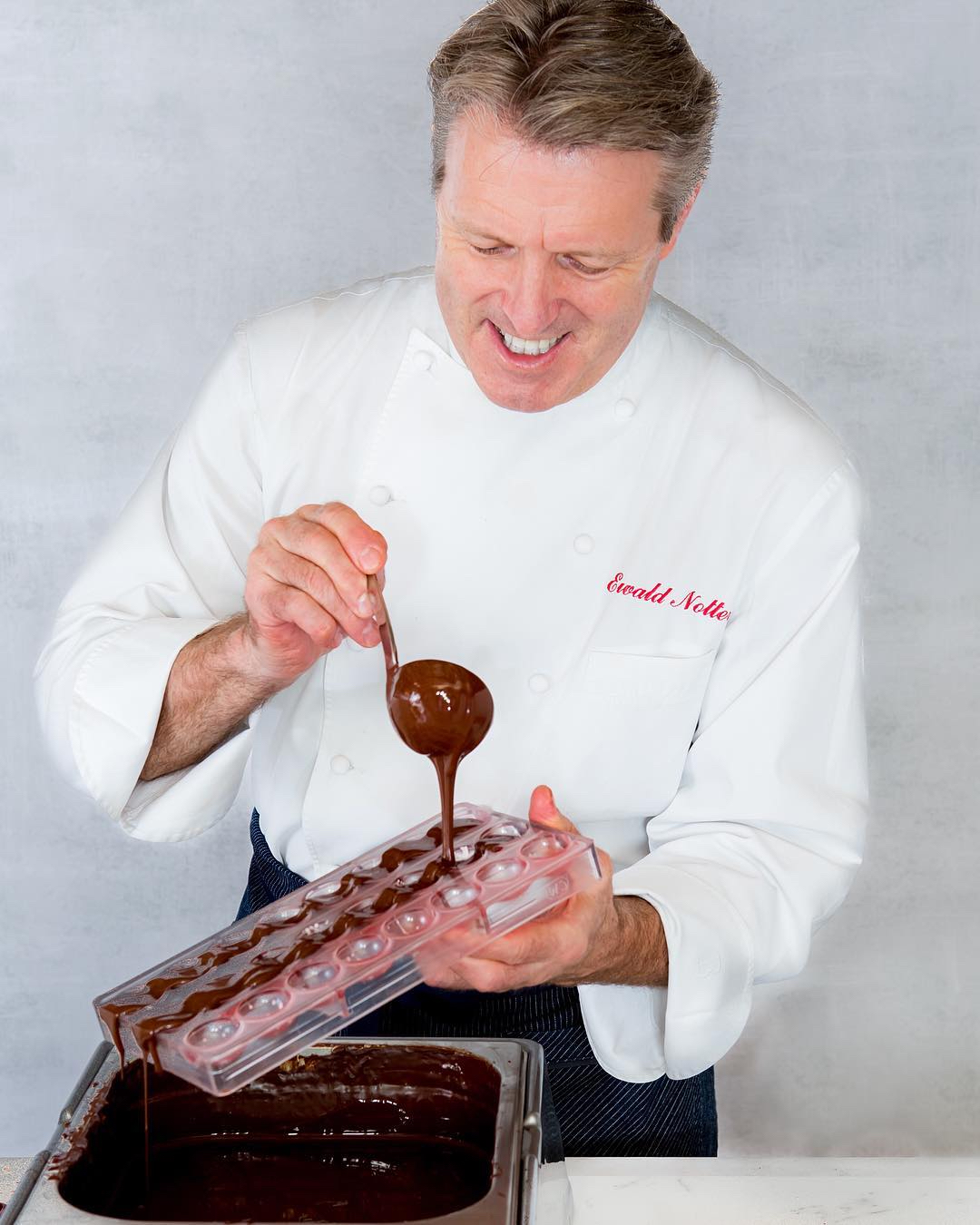
Ewald is one of the preeminent chefs in the world of pastry, revered for his unparalleled talent, boundless creativity, and unwavering dedication to the craft. His legacy continues to shape the future of pastry arts, inspiring chefs and enthusiasts alike to strive for excellence, innovation, and mastery in every creation.
Before delving into the cooking of sugar or the formation of pastillage, this article will first explore the essential starting point: basic equipment, tools, and ingredients required to effectively work with sugar and pastillage.
In line with various culinary disciplines, achieving desired outcomes in sugar crafting hinges on using the right equipment. Here are some basic, but necessary, kitchen tools, including small appliances and handheld equipment, recommended by Ewald to facilitate the creation of exquisite pieces and sculptures.
Small Appliances
- Cooking Stove or Induction Plate
- Gas burner
- Induction plate
- Microwave oven
Hand Equipment
- Alcohol burner – Essential as it will not leave soot on the sugar pieces. Best to use denatured alcohol
- Aluminum foil – Primarily used as a “mold.” Crumbled up and unfolded will give the cast sugar an interesting appearance.
- Aluminum plate – Fine strings of sugar can be piped onto a vegetable oil-coated aluminum plate to create a fan.
- Ball modeling tool – This is to thin the edges of pastillage when making leaves and flowers.
- Basket weaving stand – This is used in sugarwork. It is designed for weaving baskets or hold small spheres while they are drying.
- Blowtorch – Used to apply direct heat to a piece of sugar or Isomalt.
- Bottles with droppers – Used to add ingredients – like tartaric acid – to boiling sugar solutions
- Bowls – A variety of stainless steel bowls to be used when mixing pastillage or to hold water for washing down the sides of the pan when boiling a sugar solution.
- Brushes – Fine paint burshes to apply paint to dry pastillage and cooled sugar/Isomalt pieces. Wider paint brushes (2″-4″), dampened with water to wash down the inside wall of the pan when boiling sugar solution.
- Cake board – An 8-inch round cake board can be used to roll vines out of pastillage.
- Foam cell pad – When thinning edges of pastillage leaves and flowers with a ball modeling tool, a foam cell pad provides a soft work surface.
- Clamps – These are used in sugarwork wot hold vinyl tubing to secure an object when a hot solution is poured into it, and firmly close the ends of the vinyl tubing when it contains a hot solution.
- Cold spray – This is an aerosol spray used to cool or freeze parts of cast sugar immediately to enforce and design cracks. It can also be used when assembling pastillage pieces to form an immediate attachment.
Food-grade Colors
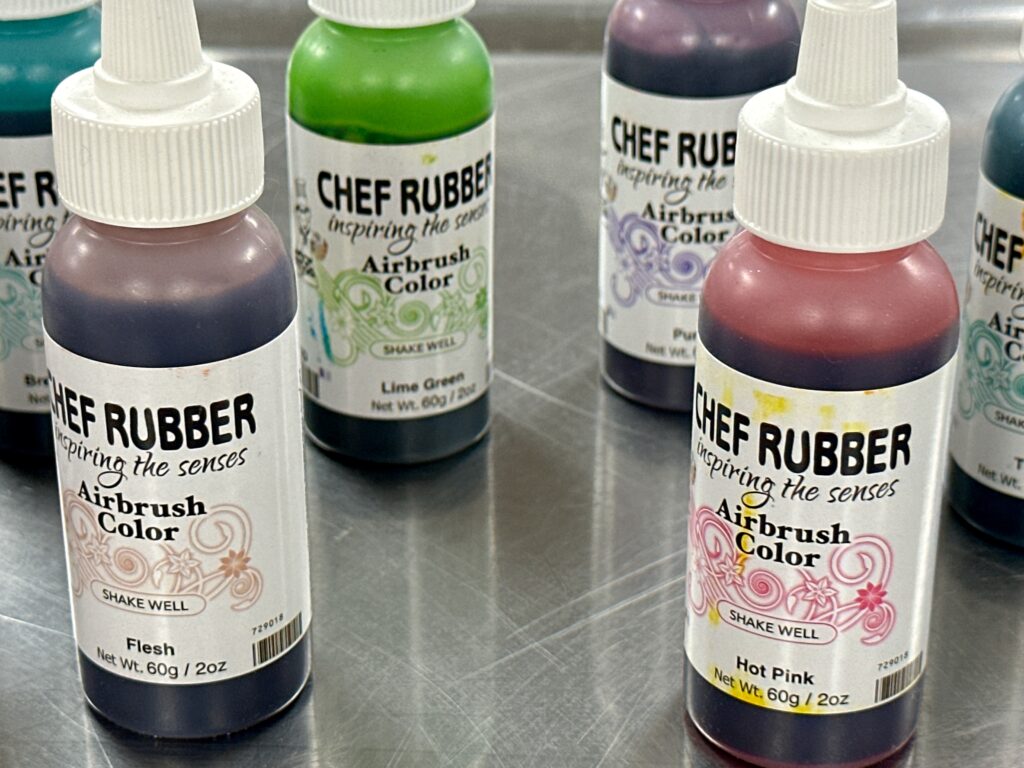
Colorants are offered in a multitude of forms, and selecting the appropriate type is crucial depending on the intended creation. The type of colorant you use for chocolate will not be the same as one that would be used for sugar or pastillage. Club Coupe du Monde Team USA uses Chef Rubber colorant.
- Food-grade powder color – Food-grade powder color is recommended for addition to sugar and Isomalt solutions. Before adding it to the solution, mix the powdered color with a small amount of water to dissolve the powder. Many liquid colors contain acid and are not recommended for use with sugar solutions. The additional acid in the colorant will soften the sugar solution; in the worst case, it will invert the sugar. Regular acid-based airbrush colorant is recommended for airbrushing color onto finished pieces. Alcohol-based airbrush color may turn Isomalt dull.
- Food-grade liquid coloring – Food coloring in liquid form adds color to finished pieces when applied with an airbrush or handheld paintbrush.
To make working with pastillage easier, Ewald recommends making a cornstarch pouch or a beggar’s purse, out of a new, clean nylon stocking. Cut the stockings into 4-inch/10-cm pieces, tie a knot in one end, fill with cornstarch, and tie a knot in the other end. This is used during rolling to dust the work surface and the surface of the pastillage.
Cutting Tools
The following are cutting tools Ewald recommends for both sugar and pastillage work:
- Stencils and cutters – both of these work well with sugar and pastillage work, however metal cutters and stencils are best suited for sugar work.
- X-acto knife with changeable blades – best for making clean cuts for pastillage.
- French or chef’s knife (10-inch/25-cm) – best for making long, straight cuts in pastillage as well as sugar (when pliable).
- Paring knife – making small cuts in pastillage
- Small knife – for all cutting jobs in pastillage and making colored designs on cast sugar
- Heavy-duty sharp scissors – should be kept cool to cut cooked sugar into portions
- Putty knife – can be heated with a blowtorch to cut through pulled sugar ribbons
Drying Surfaces
- Styrofoam and plywood – both of these materials allow air to flow underneath flat pieces of pastillage.
- Foam board and poster board – Can be used to create bent and shaped drying surfaces for pastillage and sugar pieces.
- PVC pipe – Cut in half lengthwise they can be used to dry cutout pastillage in curved shapes
- Cardboard mailing tubes – same use as PVC piping
- Teflon and silpats -best to use in sugar work.
Latex or vinyl gloves to protect hands when working with sugar.
Hair dryer (with a stand) best for cooling or cold-setting sugar pieces.
Metal bars – can be used in both sugar and pastillage work.
Metal half spheres – can be used as a mold to press in a mixture of granulated sugar and water.
Molds and textures surfaces
Neoprene – used for casting sugar and Isomalt
Noodles – used for casting curvy shapes in sugar or Isomalt
Pans
Parchment Paper
Graphite pencils
Piping bags / cornets
Plastic wrap / bags
Rolling pins
Ruler
Sandpaper
Scale
Scrapers
Spatula (heat resistant)
Spun sugar tool
Strainer (fine-mesh or skimmer)
Sugar pump
Templates
Thermometers
- Baumé hydrometer scale – used to measure the density of sugar
- Candy thermometer – a necessity for measuring the temperature of boiling sugar solution.
Titanium dioxide*** – A compound used to create white sugar pieces. For opaque white, add 2 drops of titanium dioxide for every 35.25 oz. / 1000g of sugar or Isomalt***.
Warming case or food warmer
Whisk or spoon
Work surface
Professional tools
Air Compressor
- Compressor
- Airbrush head
- Glass jars
Stand mixer
*** It should be noted that during competitions, some of these items may not be permitted. For example, competitors at the biennial Coupe du Monde de la Pâtisserie in Lyon, France do not permit the use of Isomalt or titanium dioxide (E171), as well as coloring agents and iron oxides (E172).
